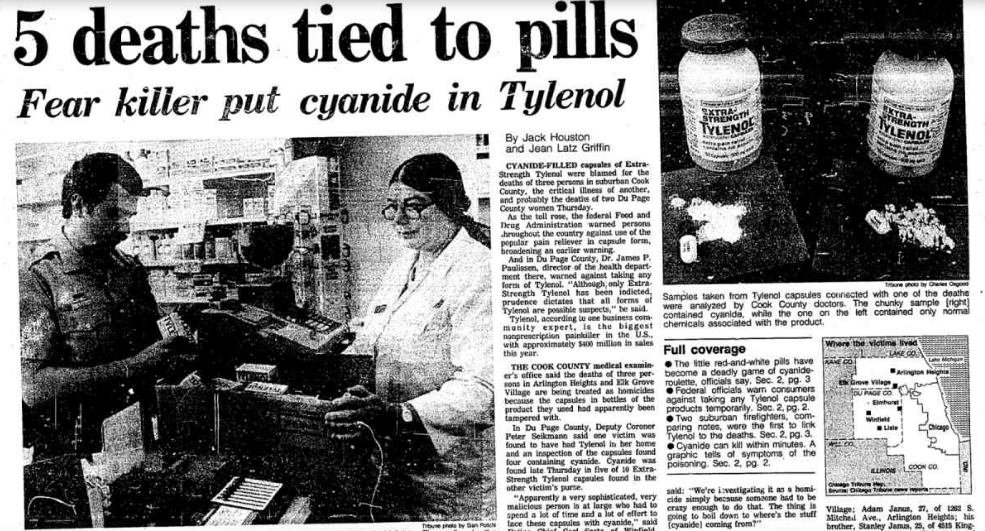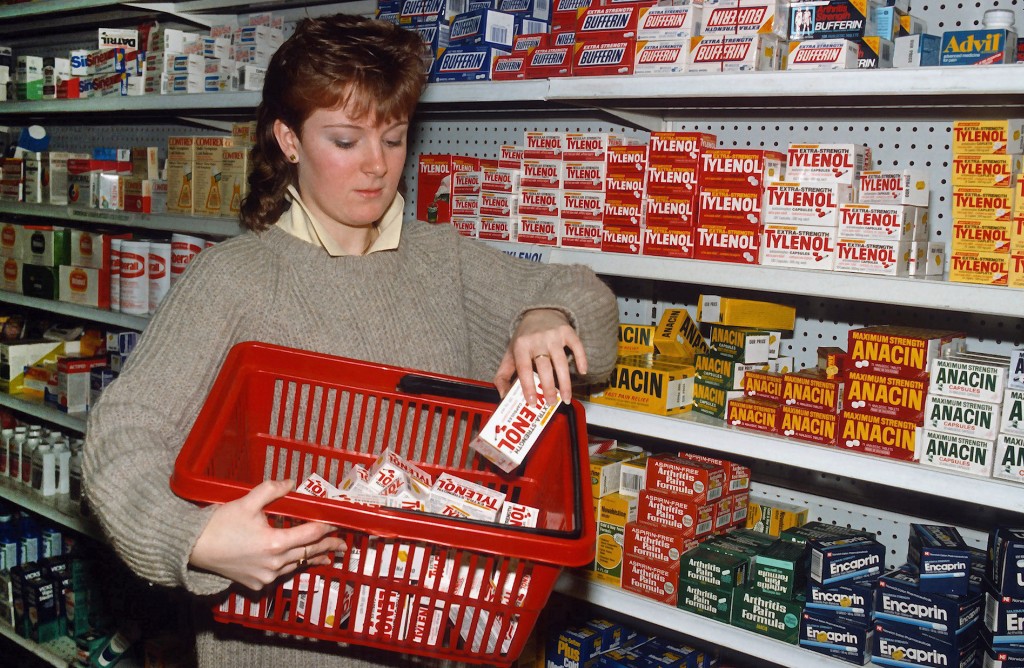In the fall of 1982, Chicago’s suburbs were gripped by fear as police cars drove through neighborhoods warning residents against taking Tylenol. The alarming events that led to this unprecedented public warning are detailed in CNN’s documentary How It Really Happened: Tylenol Murders. The scare began with the sudden and mysterious deaths of seven individuals, all linked to the popular over-the-counter pain reliever. The tragedy left Americans on edge and sparked one of the most infamous murder investigations in U.S. history.
The tragedy started on September 29, 1982, when 12-year-old Mary Kellerman from Elk Grove Village, Illinois, died shortly after taking a Tylenol capsule for a minor illness. Later that day, postal worker Adam Janus also passed away after consuming Tylenol, followed by the deaths of his brother Stanley and sister-in-law Theresa, who took pills from the same bottle. Over the next few days, three more individuals in the Chicago area—Mary McFarland, Paula Prince, and Mary “Lynn” Reiner—succumbed to cyanide poisoning after ingesting the capsules. In total, seven people lost their lives, all within a close geographic proximity.

The connection to Tylenol was first identified by Arlington Heights Village Nurse Helen Jensen, who noticed missing capsules from a Tylenol bottle at the Janus home. Further investigation revealed that the capsules had been tampered with—potassium cyanide was substituted for the medicine. This discovery prompted Johnson & Johnson to initiate a historic recall of 31 million bottles of Tylenol Extra Strength, marking the first major mass recall in U.S. history. The subsequent investigation unfolded like a thriller, with numerous twists, dead ends, and a persistent lack of conclusive answers.
James William Lewis emerged as the most prominent suspect after sending an extortion letter to Johnson & Johnson demanding $1 million to stop the killings. Convicted of attempted extortion, Lewis served 10 years in prison but denied direct involvement in the murders. Other suspects, including dock worker Roger Arnold and even Ted Kaczynski, the Unabomber, were investigated, but no definitive links to the poisonings were established. The case remains unsolved, though recent advancements in DNA technology may offer new hope for closure.
Despite the tragedy, the Tylenol murders led to critical public safety reforms, including the introduction of tamper-resistant packaging for medications. These measures, born out of a horrific crime, have saved countless lives by preventing similar incidents. While the mystery of the Tylenol killer endures, the legacy of these safety measures serves as a lasting reminder of the importance of vigilance in protecting public health.
